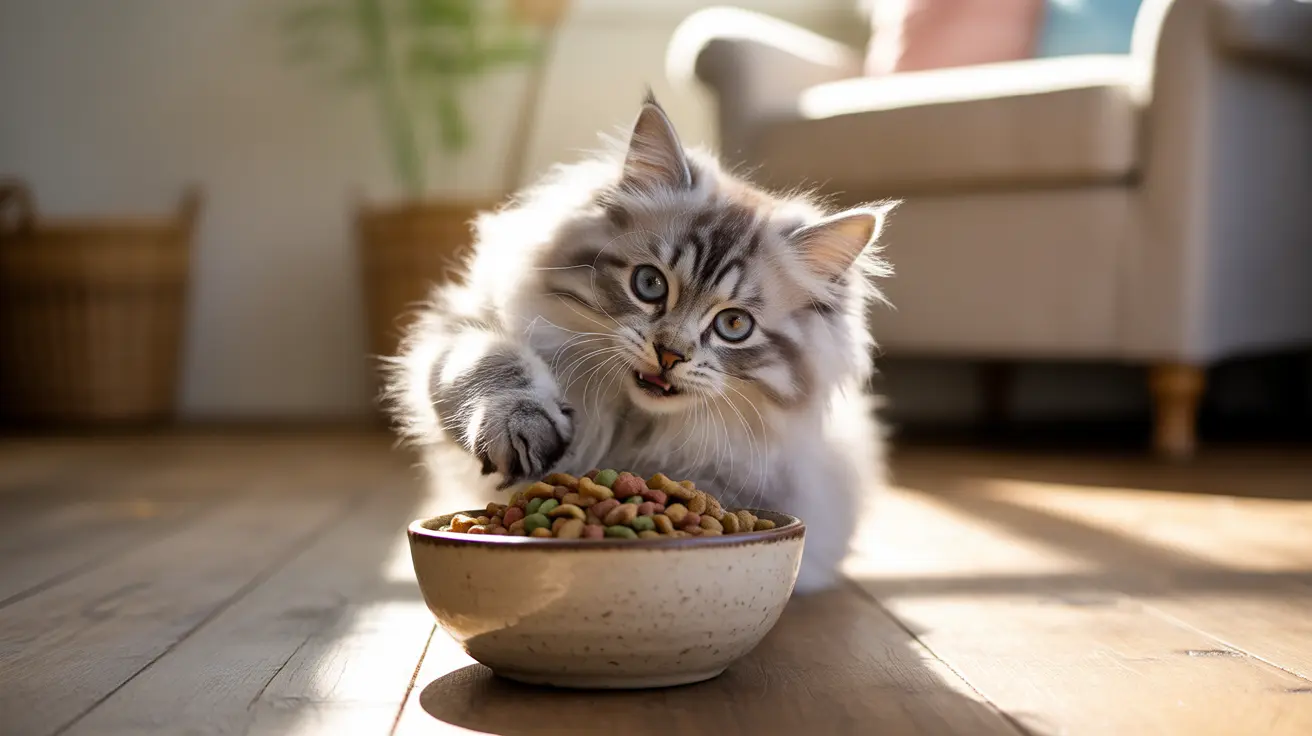Many cat owners are surprised to learn that cats can indeed develop eating disorders, though they manifest differently from human eating disorders. These conditions can seriously impact a cat's health and quality of life, ranging from overeating to complete food avoidance. Understanding these disorders is crucial for every cat owner's ability to identify and address potential problems early.
In this comprehensive guide, we'll explore the various types of eating disorders that can affect cats, their causes, symptoms, and most importantly, how to help your feline friend maintain healthy eating habits.
Common Types of Feline Eating Disorders
Overeating (Polyphagia)
Overeating in cats can stem from various causes, including medical conditions like hyperthyroidism and diabetes, or behavioral issues such as anxiety and boredom. Some cats may develop a pattern of excessive eating due to competition with other pets or learned behaviors from inconsistent feeding schedules.
The consequences of chronic overeating can be severe, potentially leading to obesity, diabetes, and joint problems. Regular monitoring of your cat's food intake and weight is essential for preventing these health issues.
Undereating and Anorexia
When cats stop eating or significantly reduce their food intake, it can quickly become life-threatening. Unlike humans, cats can develop serious liver problems after just 24-48 hours without food. Medical conditions, stress, or changes in environment can all trigger reduced appetite or complete food avoidance.
Compulsive Eating Behaviors
Some cats develop unusual eating patterns like pica (eating non-food items) or eating too quickly. These behaviors can lead to serious health complications, including intestinal blockages, choking, or chronic digestive issues.
Identifying the Signs of Eating Disorders
Early detection of eating disorders is crucial for successful treatment. Watch for these warning signs:
- Sudden changes in appetite or eating patterns
- Significant weight loss or gain
- Vomiting after meals
- Eating non-food items
- Aggressive behavior around food
- Hiding while eating
- Excessive begging for food
Treatment and Management Strategies
Medical Intervention
If you suspect your cat has an eating disorder, the first step is always a veterinary examination. Your vet can identify underlying medical conditions and develop an appropriate treatment plan, which may include:
- Medication for underlying conditions
- Appetite stimulants when necessary
- Dietary modifications
- Nutritional supplements
Behavioral Modification
Many eating disorders have a behavioral component that requires attention:
- Establishing consistent feeding schedules
- Using puzzle feeders to slow down eating
- Creating stress-free feeding environments
- Providing environmental enrichment
- Addressing anxiety or stress triggers
Prevention and Long-term Management
Preventing eating disorders often involves creating a stable, stress-free environment for your cat. This includes:
- Regular veterinary check-ups
- Maintaining consistent feeding routines
- Providing appropriate environmental enrichment
- Monitoring food intake and weight
- Addressing behavioral issues promptly
Frequently Asked Questions
What are the common signs that my cat might have an eating disorder?
Common signs include sudden changes in appetite, weight fluctuations, vomiting after meals, eating non-food items, and behavioral changes around food. Any significant change in eating habits should be evaluated by a veterinarian.
Why does my cat sometimes eat non-food items like fabric or plastic (pica)?
Pica can be caused by nutritional deficiencies, stress, anxiety, or medical conditions. Some cats may develop this behavior due to early weaning or as a response to boredom. Always consult a veterinarian to rule out underlying health issues.
How can I tell if my cat is eating too fast, and is it harmful?
Signs of eating too quickly include gulping food, gagging while eating, and vomiting shortly after meals. This behavior can lead to digestive issues and nutrient absorption problems. Slow-feed bowls or puzzle feeders can help address this issue.
What medical conditions can cause a cat to overeat or under-eat?
Several conditions can affect eating habits, including hyperthyroidism, diabetes, kidney disease, dental problems, and gastrointestinal issues. Any sudden change in appetite warrants veterinary attention.
How should I manage my cat's eating habits to prevent overeating or anorexia?
Establish regular feeding times, use appropriate portion sizes, and create a calm feeding environment. Monitor your cat's weight and appetite, and use feeding tools like automatic feeders or puzzle toys when appropriate. Consult with your veterinarian about the best feeding strategy for your cat's specific needs.






